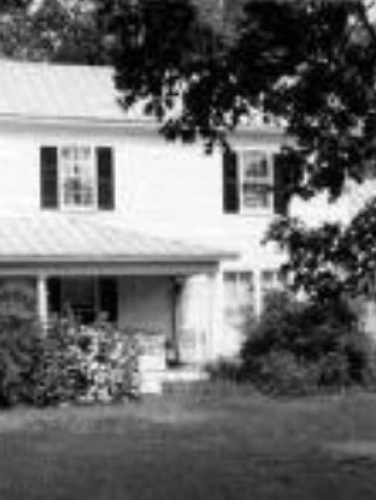
Bradford Farm
(ca. 1890)
The Bradford Farm remains as a testament to the ingenuity and self-sufficiency of Mecklenburg County farm families in the late 1800s and early 1900s.
15908 Davidson-Concord Rd, Davidson, NC 28036
The William Bradford Farm stands as a tangible reminder of the robust cotton economy that characterized Mecklenburg County in the last half of the nineteenth century. The farmstead and accompanying store (located across Davidson-Concord Road from the farmhouse) flourished in the Ramah Community from the late 1800s through the mid-twentieth century as an integral part of the rural farming community that centered around Ramah Presbyterian Church in northwest Mecklenburg County. That era was one of the most prosperous times for area farmers, thanks to innovations in fertilizer and equipment as well as Charlotte’s emergence as a regional cotton trading and textile hub, making cotton both easy to grow and to sell. Farmers like William Bradford profited handsomely from this post-war cotton boom.
Property Quick Links
William Bradford was thirty-four when he purchased a parcel of farmland along the Davidson-Concord Road near Ramah Presbyterian Church from S. L. W. Johnson in 1890. He, his wife Mary, and their children moved into the modest one-story house already standing on the property and began raising cotton. The family quickly outgrew the house, prompting William to begin work on a major addition to the small farmhouse in the late 1890s. By the turn of the century, the four-room building had been transformed into a spacious two-story farmhouse.
Between 1890 and 1928, William transformed his farmstead into one of the largest and most prosperous farmsteads in the Ramah Community. Although he grew primarily the cash crops of cotton and corn, Bradford also supplemented his family’s income with several profitable side operations, providing the Ramah Community with a country store, a cotton gin, a blacksmith shop, and a sawmill. The Bradford farmhouse, a sprawling Queen Anne-inspired variation on the tradition vernacular I-house form, reflects William’s success as a farmer, businessman, and politician (he served three terms as a Mecklenburg County commissioner in the 1910s). It also evidences the family’s prominent position within the Ramah Community. Along with the assortment of outbuildings that remain on the property – including a barn, a smokehouse, several storage and shed buildings, and the store across the street – the property forms a comprehensive farm complex that characterizes the diverse and self-sufficient nature of life in rural Mecklenburg County during the late 1800s and early 1900s.
Although William and his son Hurd Grier Bradford continued to grow cotton, corn, and grain, they were constantly undertaking new projects to increase the profitability of their operation. The Bradfords took up chicken farming (raising more than 10,000 chickens at its peak), built a large two-story smokehouse that served the surrounding community, and started a sawmill (an operation that eventually grew so large that Hurd had to hire an overseer to manage it). By 1928, when William sold the farm to Hurd, the farmhouse included two large, gabled rear additions and a wrap-around front porch. Hurd added a shed-roofed addition to the side of the house in the 1930s. The farmstead, including the farmhouse, has remained in the Bradford family well into the twenty-first century.

